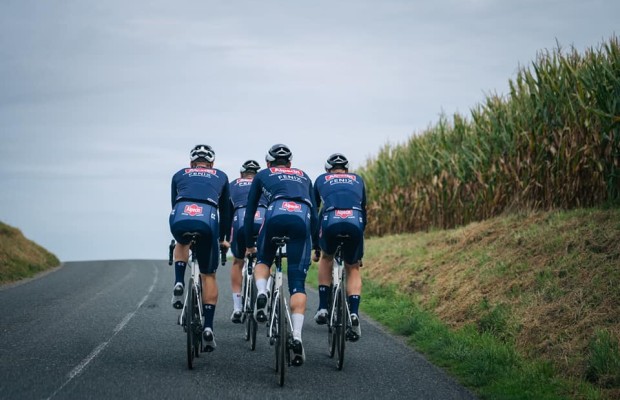How much and how do cyclists sleep in the Tour de France?
In a stage race like the Tour de France, where the cyclist has to perform at their maximum for 3 weeks, rest and recovery from one day to the next become key pieces to maintain the level. Nowadays, activity monitors, such as WHOOP bracelets, are used by many teams to monitor their cyclists' activity 24 hours a day.

This is how teams monitor the rest of their cyclists during the Tour de France 2024
Monitoring the activity and rest of cyclists has become another tool that cycling teams have to obtain the maximum performance from each of them, especially in a 3-week race like the Tour de France where the pace is so brutal every day that not sleeping well can greatly affect performance the next day.

RECOMENDADO

The cyclist's patience: how long, gentle training sessions build your best season

Tips for cycling in the rain

25 cycling gifts ideas to get it right

When do helmets have to be changed? Do they have an expiration date?

Some reasons to stay away from the road in winter

S-Works: what does it really mean and where does Specialized's most exclusive label come from?
That is why teams constantly monitor the activity of their riders using activity monitors like WHOOP bracelets, obtaining valuable data from them. Among these, one of the most important is the one that informs about the duration and quality of sleep during the nights, which allows detecting situations of excessive fatigue or anticipating the onset of illnesses among other aspects, and which the team uses when planning the strategy for the next day, for example, not assigning a relevant role to a rider who has been sleeping poorly for a couple of days.
In a study published by the medical journal Sports Medicine, a study has been presented in which researchers have had anonymous access to the sleep data of cyclists from a team in order to study what sleep pattern is most common and how the accumulation of efforts affects it and other parameters such as heart rate.

A study that was carried out during the 2023 Tour de France, both in the men's and women's races, and which revealed these patterns. First with the data prior to the Tour de France.
- Bedtime: 10:03 PM
- Wake-up time: 6:21 AM
- Time in bed: 8.3 hours
- Sleep time: 7.2 hours (87% of the time)
- Light sleep: 45%
- Slow wave sleep: 18.5%
- R.E.M. sleep: 23.4%
- Resting heart rate: 41.8 bpm
And this is how sleep patterns changed during the Tour de France.
- Bedtime: 10:20 PM
- Wake-up time: 6:36 AM
- Time in bed: 8.4 hours
- Sleep time: 7.2 hours (86.4% of the time)
- Light sleep: 49.5%
- Slow wave sleep: 17.3%
- R.E.M. sleep: 19.6%
- Resting heart rate: 44.5 bpm
Between both races, it can be seen that cyclists try to maintain their bedtime and wake-up routines, a routine that is even maintained on rest days. However, the increase in light sleep indicates that during the Tour, sleep is slightly worse. In any case, these average patterns during the Tour were affected by specific cases such as a cyclist who barely slept 4 hours one day or another who spent more than 12 hours in bed one day.

A very interesting fact that shows the excellent recovery capacity of these athletes is that the resting heart rate remained fairly constant throughout the race, even after tough mountain stages where the quality of sleep did not vary significantly. It is also curious that the women slept almost an hour more on average than the men.